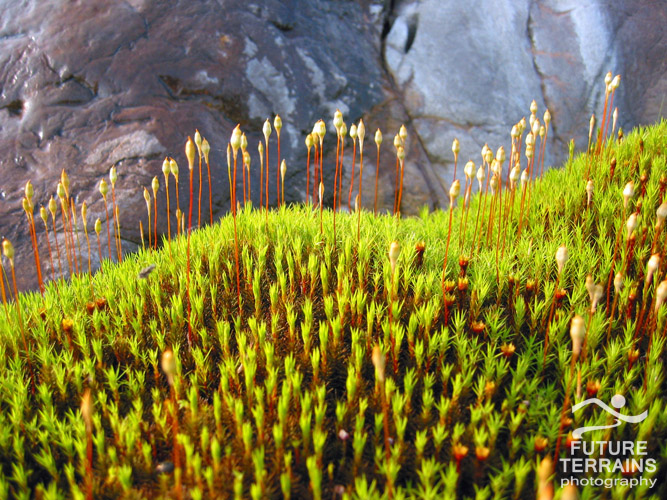‘We’ll just plant a few trees and walk away’ replied the mining company director after I’d asked him what thoughts had been given to restoring his post-mining land. He was pulling my leg, I think…
The restoration of post-mining land is often stipulated in legislation relating to the industry, which typically requires that land is ‘restored’ to a viable end-use and/or that pre-mining vegetation cover is returned. However, mining activities may irreversibly alter topographies, soils, water dynamics and human land-use. In reality such considerations need to be factored into mine closure planning and ecological restoration activities. In many situations if a mine has been developed on a previously degraded site, it may be desirable to restore the site to an improved ecological state than previously.
The Society for Ecological Restoration defines ecological restoration as ‘the process of assisting the recovery of an ecosystem that has been degraded, damaged, or destroyed’. This involves considerations of: what are we aiming to restore to? How do we achieve it? Who decides? How will we know when we get there? Who will maintain it when we are gone? These are all questions that should be addressed during planning for closure during the life of mine.
Creating/ restoring a damaged habitat or ecosystem is rarely as straightforward as just planting a few trees. It is often necessary to determine how to propagate and establish key species and this may take years of work in collaboration with ecological researchers. Developing appropriate substrates, particularly when there is insufficient soil, is also a challenge. Given the perturbed nature of mine sites, it may be necessary to go against the conservation grain by using non-local/ non-native species to achieve restoration aims beyond what is possible using (the usually preferred) local/ native species, e.g. to provide rapid ground cover to reduce soil erosion, or nurse trees to aid the establishment of more sensitive species. This may also conflict with regulation in jurisdictions that require the use of native/ local species.
If the goal is a semi-natural habitat, such as in many parts of Europe, including the UK, there will be a requirement for management to ensure that the ecological and cultural value of the new landscape persists long-term. Therefore there needs to be recognition that although the mine has formally closed, someone has responsibility for ongoing management and aftercare. Hence the need for meaningful stakeholder and local community engagement in mine closure planning.
Progressive restoration is ecological restoration that is carried out during a mine’s operational phase. This is desirable as it reduces end closure costs and risks and reduces the necessity for long-term management of mineral wastes as waste rock, for example, may be re-used in the progressive restoration practices. Some types of mining are better suited to progressive restoration than others, for example: strip mining for coal and bauxite; mineral sand mining for ilmenite, rutile and diamonds, etc.; but forward thinking in most mining scenarios would allow at least a degree of progressive restoration during the operational phase. After all, as stated by a colleague working in Central America, we know enough about restoring degraded environments to make substantial ecological improvements – although restoration may not always be perfect, any improvement is better than none!
There are many examples of interesting and successful post-mining ecological restoration schemes. I have chosen just four across different geographies and mining circumstances to highlight the scale and breadth of what is achievable given sufficient motivation, care and consideration.
Richards Bay Minerals, South Africa
RBM operates extensive mineral sand mining operations for ilmenite, on the north-east coast of South Africa. Its dune forest restoration programme is world-renowned.
Re-Greening of Sudbury, Ontario, Canada
The smelter-mining-logging damaged landscape of Sudbury, Ontario, is globally famous for the once extensive denuded, blackened, skeletal ‘ barrens’, where once stood great forests. Since the 1970s, soils have been improved, lakes de-acidified and millions of trees have been planted, assisting in the economic and social regeneration of the city.
Trombetas bauxite mine, Brazil
Begun in the 1970s the Trombetas bauxite strip mining complex involves removal of Amazon rainforest and its simultaneous progressive restoration, on a huge scale.
Volcanic rock quarry, Santa Cruz, Galapagos Islands, Ecuador
Mina Negra (Black Mine) and Mina Roja (Red Mine) are two small aggregate (volcanic cinder) quarries on the northern part of the island of Santa Cruz in the Galapagos Islands. They provide much of the raw mineral material for local road building and other development. Rudimentary tree establishment is underway on-site to stabilise land and help reduce dust.
#MineClosurePerspectives is produced in support of the international conference Mine Closure 2014. Building Understanding is one of four Future Terrains service areas for tackling the challenge of degraded lands.








